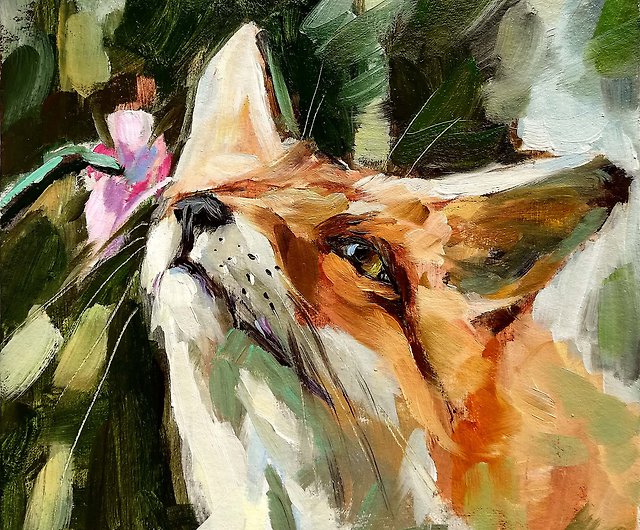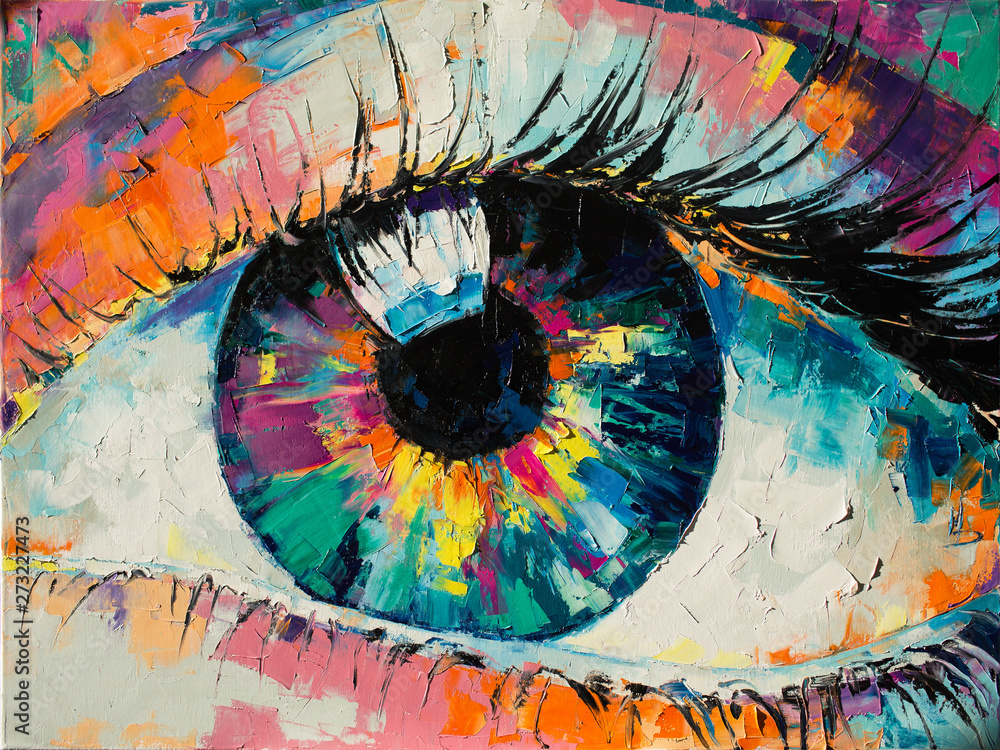Browse Expressive Figurative Oil Paintings for Sale
Wiki Article
Discovering All Concerning Oil Paintings: A Guide to Understanding Their Charm and Value
Oil paintings have actually astounded target markets for centuries, using a look into the creative mastery of numerous periods. Their abundant history is intertwined with cutting-edge strategies and extensive psychological expression. Comprehending the materials and techniques behind these artworks can enhance appreciation. In addition, the marketplace for oil paintings provides opportunities for enthusiasts and financiers alike. As one discovers this interesting world, the inquiry arises: what makes an oil painting absolutely useful?The History of Oil Paint: A Journey Via Time
Although oil paint has roots that go back to ancient times, it absolutely thrived throughout the Renaissance, when musicians found its versatility and abundant shade potential. Early instances can be mapped to the 7th century, with methods evolving significantly across cultures. The tool became famous in Northern Europe in the 15th century, particularly via the works of musicians like Jan van Eyck, that originated its usage for comprehensive realistic look and dynamic shades. This period noted a departure from tempera paints, enabling higher deepness and texture. As oil paint spread, it influenced plenty of musicians, leading to work of arts by renowned figures such as Leonardo da Vinci and Rembrandt. The tool's heritage continues, forming the art world well right into contemporary times.Recognizing Oil Paints: Materials and Techniques
As musicians explore the world of oil paints, they run into a diverse variety of products and methods that define this tool. The primary parts of oil paint include pigments, which supply shade, and drying out oils, such as linseed, that bind the pigments and facilitate application. Various additives can customize the paint's structure and drying time, improving versatility. Techniques like glazing, where transparent layers are developed up, and impasto, which entails applying thick paint, permit various aesthetic impacts. In addition, the use of brushes, combination knives, and even fingers can produce one-of-a-kind textures and coatings. Recognizing these materials and methods allows artists to fully express their creative thinking and attain the preferred impact in their artwork.The Role of Color in Oil Paints
Shade plays a critical role in oil paints, affecting both aesthetic charm and psychological resonance. Understanding color concept essentials, including the connections between hues, can improve an artist's capacity to communicate mood and ambience. Additionally, understanding color blending methods allows for higher deepness and splendor in a painting's combination.

Color Theory Essential
Recognizing color theory is necessary for musicians dealing with oil paints, as it forms the structure for developing unified and visually interesting compositions. Shade theory incorporates the research study of how shades communicate, the shade wheel, and the connections between key, secondary, and tertiary colors. Artists make use of complementary shades to improve contrasts and develop centerpieces, while analogous colors advertise unity and cohesiveness within a piece. In addition, the concepts of great and warm shades affect the understanding of deepness and area in a paint. Comprehending these concepts enables musicians to manipulate color effectively, leading the viewer's eye and interacting their intended message. Mastery of shade theory eventually improves an artist's capability to communicate feelings and ideas with their work.
Psychological Impact of Shade
The emotional influence of color in oil paints plays an important duty in exactly how visitors attach and perceive with artwork. Shades stimulate specific feelings and moods, affecting the visitor's emotional state. For example, cozy tones like oranges and reds can create a feeling of warmth and energy, while awesome tones such as blues and environment-friendlies frequently evoke calmness or self-questioning. Artists tactically choose color combinations to improve narrative aspects, assisting the target market's psychological journey. The saturation and contrast of colors even more enhance these effects, drawing attention and creating focus. Eventually, the interplay of colors in oil paintings not only boosts their visual charm however additionally acts as an effective tool for emotional expression, improving the visitor's experience and interpretation.Color Mixing Techniques
While many facets of oil painting add to the total make-up, grasping color blending methods is essential for attaining wanted impacts and depth. Shade blending can be come close to with various approaches, consisting of the subtractive and additive processes. Additive blending includes combining shades of light, while subtractive mixing relies on pigments, where colors mix to develop brand-new shades. Artists often make use of a restricted combination to create unified works, recognizing the partnerships between key, additional, and tertiary colors. Strategies such as glazing and scumbling even more enhance deepness and luminosity. By masterfully mixing colors, an artist can stimulate feelings, create centerpieces, and accomplish a feeling of realism, inevitably elevating the paint's visual and psychological influence.Famous Oil Painters and Their Iconic Works

Famous for their proficiency of color and method, oil painters have actually created a few of one of the most celebrated artworks in background. Renowned musicians like Vincent van Gogh astounded audiences with his emotive brushwork in "Starry Evening," while Claude Monet's "Impact, Dawn" prepared for Impressionism. Leonardo da Vinci's "Mona Lisa" continues to be an enduring symbol of imaginative wizard, showcasing his skill in catching human expression. At the same time, Rembrandt's "The Night Watch" shows his cutting-edge use light and shadow. Various other remarkable numbers consist of Pablo Picasso, who transformed modern-day art with his vibrant experimentation in works like "Les Demoiselles d'Avignon," and Georgia O'Keeffe, whose dynamic depictions of landscapes and blossoms assisted specify American modernism. Each musician's distinct design added significantly to the oil painting landscape.
Just how to Assess the Quality of an Oil Paint
Examining the top quality of an oil paint involves a careful analysis of workmanship techniques, along with an evaluation of shade and make-up. Observing brushwork, layering, and the application of paint can expose the artist's ability level. Additionally, the interaction of colors and the overall setup of aspects add considerably to the painting's visual worth.Examining Craftsmanship Strategies
A thorough evaluation of craftsmanship strategies is necessary for figuring out the high quality of an oil painting. Critics ought to initially analyze the application of paint; thick, distinctive brushstrokes may recommend a proficient hand, while overly consistent applications could suggest an absence of depth. oil paintings for sale. The layering method is also essential; the existence of lusters and varied density can enhance luminosity and intricacy. Furthermore, the quality of the products used, such as the canvas and pigments, plays a significant duty in toughness and general aesthetic. Focus to detail in components like sides and shifts in between colors mirrors the artist's dedication to their craft. Eventually, these strategies add to the painting's psychological influence and market price, acting as signs of the musician's skill and intentExamining Color and Structure
While evaluating the quality of an oil paint, one must focus on the interaction of shade and composition, as these aspects are fundamental to the art work's overall influence. Shade choices can establish and evoke feelings mood; consequently, the artist's scheme should be checked out for harmony and comparison. A well-balanced structure directs the audience's eye and produces a feeling of unity. Artists commonly use techniques like the policy of thirds or leading lines to enhance visual rate of interest. Additionally, using light and shadow can add deepness, boosting the three-dimensionality of the painting. Ultimately, a successful oil paint weds shade and composition, engaging the audience and welcoming a much deeper appreciation of the artist's vision and method.Taking care of and Preserving Oil Paintings
Appropriate treatment and conservation of oil paintings is crucial for preserving their integrity and longevity. To shield these artworks, it is important to display them far from straight sunlight, which can cause fading and staining. Maintaining a stable setting with regulated temperature and humidity more aids in protecting against damage. Cleaning need to be done carefully using a soft, completely dry cloth, avoiding any kind of extreme chemicals that could damage the paint or varnish. Routine evaluations for indications of degeneration, such as splitting or flaking, are advisable. When transporting or saving oil paintings, proper cushioning and framing are essential to stay clear of physical harm. Inevitably, persistent treatment adds to the aesthetic appeal and worth of oil paintings with time.The Market for Oil Paints: Investing and collecting
Understanding the marketplace dynamics for oil paints is necessary for enthusiasts and investors alike. The value of these art work is affected by different elements, consisting of the musician's credibility, historic significance, and present patterns. Enthusiasts frequently look for items that reverberate personally while thinking about possible admiration in value. Auctions and galleries serve as key places for trading, with costs rising and fall based upon demand and rarity. Purchasing oil paintings calls for research into the market, in addition to an understanding of credibility and provenance. In addition, arising musicians may provide chances for considerable returns, while developed names can regulate high costs. On the whole, a strategic method to gathering can produce both aesthetic pleasure and financial rewards.
Frequently Asked Inquiries
What Are the Environmental Influences of Oil Paint Materials?
The ecological impacts of oil paint materials consist of the release of unpredictable organic compounds (VOCs), unsafe waste generation, and resource removal for pigments. These aspects contribute to contamination and ecological deterioration, raising worries among ecologically conscious artists and customers.Exactly How Do Various Canvases Impact Oil Paint Outcomes?
Various canvases affect oil paint results substantially. Surface area, texture, and absorbency quality can modify paint application, drying times, and shade vibrancy. Artists commonly choose certain canvases to attain wanted impacts and boost their artistic expression.Can Oil Paintings Be Restored if Harmed?
If damaged, Oil paints can undoubtedly be brought back. Expert conservators utilize numerous strategies to repair tears, tidy surfaces, and address discoloration, making certain that the art work keeps its initial appeal and value for future generations.What Are the Signs of an Original Oil Paint?
The signs of an initial oil painting include noticeable brush strokes, texture variants, and an unequal canvas weave (oil paintings for sale). Additionally, credibility may be confirmed via provenance, signatures, and the visibility of a varnish layer one-of-a-kind to oil mediumsHow Has Modern Technology Influenced Modern Oil Paint Techniques?
Modern technology has more info considerably influenced modern-day oil painting strategies by introducing electronic tools for preparation, enhanced materials for texture and long life, and on the internet systems for marketing and sharing art, therefore broadening musicians' innovative opportunities and audience get to. Oil paint has roots that date back to old times, it truly grew throughout the Renaissance, when artists uncovered its flexibility and abundant shade potential. The psychological influence of color in oil paints plays a vital duty in exactly how customers perceive and link with artwork. While lots of facets of oil painting contribute to the general composition, grasping shade blending techniques is vital for attaining desired effects and depth. Reviewing the top quality of an oil painting involves a cautious evaluation of workmanship strategies, as well as an analysis of color and structure. While reviewing the quality of an oil painting, one need to concentrate on the interaction of shade and make-up, as these elements are fundamental to the artwork's general effect.Report this wiki page